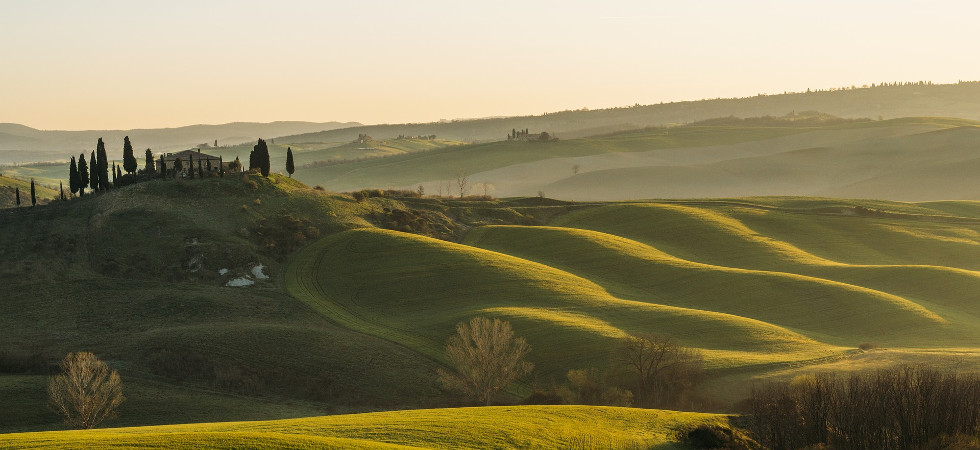For as long as memory serves, the Italian regional of Tuscany was on my travel wish list. A panorama of verdant peaks in my mind’s eye, I daydreamed about its vineyards, valleys, culture and castles. Yet I held off booking a flight for years, knowing the destination demanded due diligence and careful planning, to really squeeze the most from a trip. And so opting for tried and tested holiday spots each year, Tuscany remained a distant imagined idyll. That’s until an offer to visit a spa located in the South arrived in my inbox one day and the time felt right. I started planning my Grand Tour.
Tuscany sits in west-central Italy and covers around 23,000 km sq. Widely regarded the birthplace of the Italian Renaissance, the region also produces some of the world’s most esteemed red wines and a landscape boasting natural thermal springs. Planning a route, I wanted to drink in the architecture and terrain, whilst tasting Tuscany’s truffle-infused fare and quaffing my fair share of Chianti Classico. So after five months of selecting the best lodgings, wineries, towns and spas, plus finding a friend to enjoy it with, we boarded a plane to Pisa.
Pisa is home to one of the wonders of the ancient world. The unintended tilting appearance of its Leaning Tower is due to a subsidence caused by weak subsoil under its 3m foundation, when initially built in the 12th Century. Whizzing past the turret, my first night was to be spent in the medieval city of Siena. High atop a hill, Siena is an ancient walled city that has now seeped out of its sides into the green valleys beneath. I had booked the city’s only five-star hotel for two nights, the Grand Hotel Continental – Starhotels Collezione, from which to explore Siena’s many museums, towers and churches.
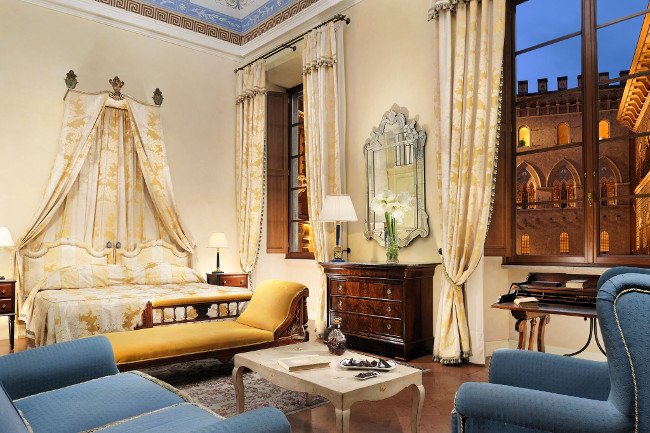
The Grand Continental is a stately and exquisite five-star palace hotel, a hop away from the cobbled lanes leading to the city’s centre, the Piazza del Campo. This vast cobbled square plays host to the annual Palio bareback horse race, whereby riders from Siena’s 17 contrade (districts) fight for a coveted winning flag. The hotel originated as a 17th Century aristocratic residence, built by the pope as a wedding gift for his niece. Now it houses 51 suites, home to antique artworks and furniture that enhances the building’s original features. Our twin room was located on the top floor and benefitted from a balcony overlooking the cities terracotta rooftops, impressive Duomo and rolling countryside beyond.
We dined in SaporDivino, the hotel’s fine dining restaurant located in its covered courtyard winter garden, which serves authentic Tuscan cuisine. To start and for primi piatti (first course), my friend and I tried the most delicate cinta pork carpaccio smoked with fennel and served with pink grapefruit, a piquant beef tartare with apples, walnuts, sour cream and raspberry sauce and a robust handmade pici pasta with lobster. Secondi (or mains) were a slow cooked veal cheek that melted against spring veg and leek cream, plus a spiced sea bass. It was Chef Luca Ciaffarafa’s puddings however that perhaps stood out most – the panpepato parfait and puff pastry with tea mousse, fig jam, peanut brittle and papaya sauce were both works of art.
While in Siena we poured in as much culture as possible. One of the most-interesting sights, aside from the breathtaking Duomo and its religious artworks, was Santa Maria della Scala, one of Europe’s oldest hospitals. It’s warren of rooms, built through the ages, included a gilded crypt in the basement, which felt like finding a pot of gold at the end of the rainbow after walking through many darkened tunnels. Deceptively I reached a window (after going up and down a fair few times) and was stunned to be several floors high above street level, when I had thought I was deep below ground. Another highlight was a local tavern – Il Bionde, or The Blonde in Italian, (Via Del Rustichetto 10 – 53100 Siena). Here we tasted the best wild boar tagliatelle of the whole trip.
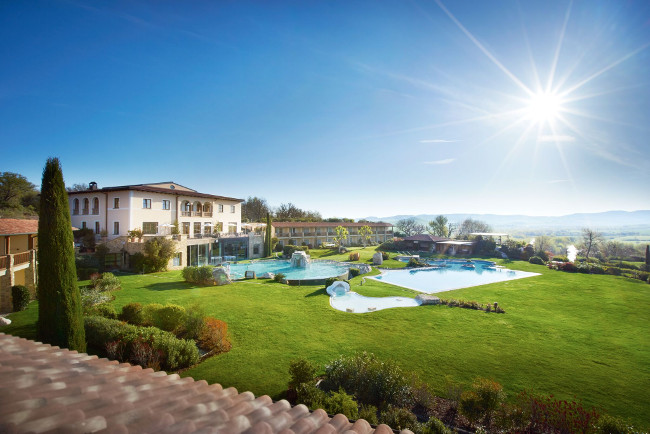
Wild boars are a definite theme for Tuscany. Quite apart from the many delicatessens selling the cured variety (the best in Siena is Antica Pizzicheria, Via di Citta, 93/95), this forest-dwelling pig is an enigmatic emblem that crops up across the whole region, providing both a regional sport and distinct cuisine characteristic. Of late, boars have even caused a stir amongst local vineyard owners, who now serve up their revenge on the beast when caught hot, usually in a stew.
Out next stop was a two hour drive south to Bagno Vignoni, an Italian village and hamlet of San Quirico d’Orcia, situated on a hill above the Val d’Orcia in Tuscany. A popular tourist destination, it is well known for its hot springs, around which the nearby Hotel Adler Thermae, Spa & Relax Resort are built. Adler means eagle in German, which makes sense when you know the owners are from the German-speaking South Tyrol area and their Adler chain has four spa resorts, each flaunting soaring countryside views.
. Channeling springs deep in the below ground, this hotel’s prized indoor and outdoor network of spa pools (over a thousand square meters) relax and gently banish toxins from the body.
The hotel offers a veritable array of saunas, steam rooms and spas (seven in total), as well as a gym and full free guest fitness programme. Classes vary in intensity, from stretching to heavy cardio, catering for all. We opted for the hydro bike class before breakfast – a kind of spin in the pool, while taking in the gorgeous surrounding valleys. Extra off-resort hiking, walking, biking and riding can be arranged at extra cost. And kids have the Aki Club – a separate free staffed club. Here they can enjoy gourmet lunches and dinners with entertainment, which also ensures the upstairs restaurant remains calm for parents and adult guests too. Guests are encouraged, as we did over three days, to stay in their swimwear and robe from dawn til dusk, meandering around the different relaxation zones. And as the emphasis is on being relaxed (not abstemious), wine and indulgent treats are encouraged, if you so please. In fact a couple of glasses of lunchtime rose outdoors have never tasted so good, while munching on fresh salads and homemade pasta, post-spa, in just my robe and shades.
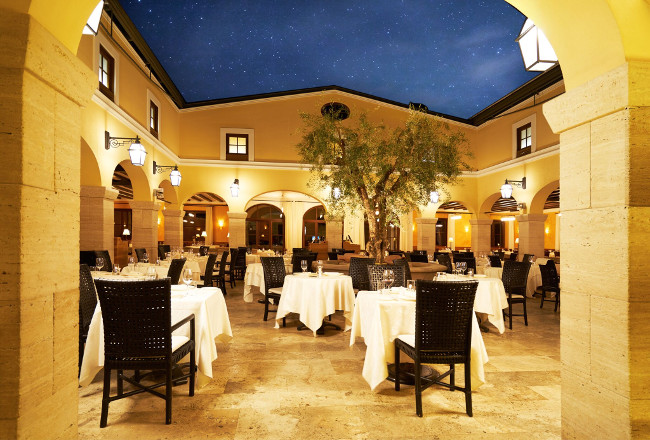
Whilst at the Adler, I enjoyed many new experiences. Firstly a master Ayurvedic treatment and massage, from which I learned I had a combination constitution of vata and pitta. Next a sauna venting experience, where no clothing is allowed and you sit and feel the heat spin around you, as alpine juniper, field herbs, and peppermint aromas are wafted from the (iced) hot coals by a towel spinning assistant. Another nice touch was Carpe Diem, the daily ‘newspaper’ delivered at breakfast, with ideas to plan one’s day, if you needed inspiration. Next time I visit I’ll try out the resort’s E-car too, an electric BMW i3, in which you can appreciate a silent drive through the beautiful surrounding countryside.
From the Adler, we headed to Pienza for the day – a tiny village in southern Tuscany in the Val d’Orcia valley. This charming spot was founded by a Tuscan called Enea Silvio Piccolomini who later became Pope Pius II. Piccolomini had the money and influence to transform his birthplace village, which is rich in churches and quaint squares. We tasted many pecorinos cheeses in local delis and took a guided tour around the fascinating Piccolomini Palace, with its esteemed collection of artworks.
Having a strong cultural identity, Tuscany is sometimes considered “a nation within a nation”. The Etruscans (from the 8th century BC, reaching their peak during the 7th and 6th centuries BC) started the first major civilization in the region, with a transport infrastructure, agriculture, mining, art and most importantly wine. For millennia this particular region’s fertile soil has produced the outstanding Chianti varieties – the Vino Nobile di Montepulciano, Morellino di Scansano and Brunello di Montalcino.

So from here, we headed to Salcheto, the vineyard and winery located in the valley surrounding the hilltop town of Montepulciano in the Chianti region. Salcheto is the name of the stream at the foot of the town – the boundary of the organic and biodynamic estate, rooted in the historic district of the Vino Nobile. The cellars here are definitely worth a tour – an engineering marvel where all light that’s needed drops down to the wine cellars a great depth below, from clever mirrored tubing leading up to light domes at ground level. I learnt each of the fine wines produced has no sulphites (perhaps the reason there were no sore heads) and is classified the Italian way, depending on blend/purity/heritage of grape, either a DOCG (the best), DOC (second best) or IGT (third best). And after our tasting, by far our favourite Salcheto wine was the Vino Nobile, made of more than 75% of the sangiovese prugnolo grape – the fermentation small oak barrels for 18 months and at least 6 months in the bottle gives an unparalleled richness and depth.
Salcheto this year opened nine guest bedrooms and a lounge with kitchen, furnished by Elisa Cavani of Manoteca, in its 13th century farmhouse. Once a watchtower for one of the access valleys to Montepulciano, all rooms have incredible views, from the old town of Montepulciano all the way to the “Chiari”, the Valdichiana portraits in the “Bird View” drawn by Leonardo Da Vinci. Our tasteful room boasted an urban-style bathroom and gorgeous olive oil based products.
Having established our base for the night, an evening was spent in Montepulciano. The largest town in the South of Siena, its name derives from legend meaning ‘mount of the king’. The town feels like a film set and rightly so, The English Patient and Twilight Saga: New Moon were both shot here. We ate like kings ourselves at Osteria de Borgo, enjoying some delectable truffle pasta on the restaurant’s terrace, gazing out across Chianti region. And a chance meeting in main square, the Piazza Grande, with two dancers led to us queuing for a ticket at the grande Palazzo Ricci. Not sure what to expect, the evening was rounded off well with a contemporary dance show by the Revolution Scuola di Danza.

The next day called for a new stop – a massage and lunch at the grand Castello del Nero Hotel & Spa, also located in the Chianti region and this year celebrating its 10th anniversary. With origins in the 12th Century, the pale yellow palace has been renovated to its original grandeur, with all modern amenities expected of a five-star hotel. Offering 50 rooms and suites, guests here enjoy an understated glamour – an intricate Italianate décor is set against a rustic backdrop of fields, vineyards, woods and valleys.
We feasted at La Taverna by the pool – the hotel’s lunch spot overseen by the same Exec Chef Giovanni Luca Di Pirro, who also heads up the hotels one Michelin starred La Torre. My Caesar salad was fresh and plentiful and my succulent fillet steak so large I sadly only managed half. We found the hotel to attract an interesting, educated crowd – I chatted both to a Turkish female entrepreneur by the pool and an enigmatic American author over lunch, who had booked two weeks here to write her next novel.
While at Castello del Nero we also tried its ESPA spa, which features aromatic Turkish bath, outdoor vitality pool, relaxation lounge and gentle sauna. My hot stone massage on a heated bed adjustable bed was one of the best I have ever experienced. We left wishing we could only stay longer.
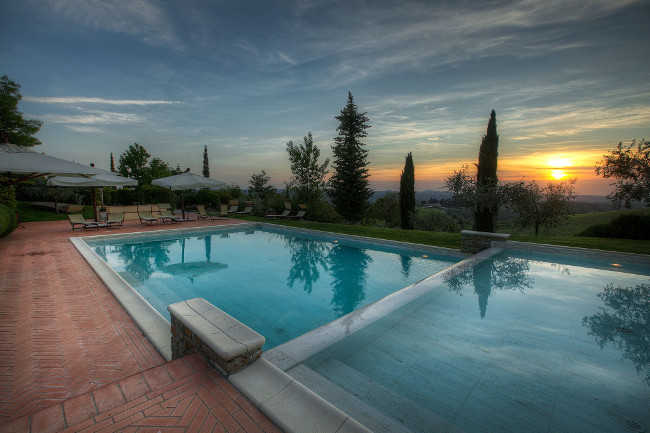
Yet vino called and we answered. On to visit one of the region’s perhaps most famed winery, Antinori nel Chianti Classico. The noble Antonori family line can be traced back more than 26 generations, each of which proudly continues winemaking. Today the winery’s new structural façade (opened just four years ago and designed by Archea Associati), appears more of a modern affair, akin to a James Bond villain’s lair. Atmospheric and sculptural by nature, its magnificent splendour showcases an oversized outdoor rust-coloured (mimicking the terroir) metal winding staircase, wide reflective glass entrance panels, copper-tones inside and art installations amidst the buildings lofty vaults. The sheer scale of the fermentation cellars, where voices eerily echo, adds a certain character to the wine tasting experience inside.
Next we visited Antonori’s sister property, Fonte de’ Medici agriturism, consisting of two hamlets dating back to 1400, in the heart of the Chianti Classico region. These are Santa Maria a Macerata – a typical Chianti village and Podere Tignanello, on a hillside facing Santa Maria. These house a picturesque collection of rustic farmhouses and quaint apartments, dotted around its traditional Trattoria delle Fonte restaurant. The venue offers world-class cookery lessons and also caters for weddings. There are also two pools, a conference room, wellness centre, tennis court and a football pitch. The views from almost everywhere are again to die for, as we had become to expect.
Next pit stop on our tour was the organic 550 hectare rustic farming estate Barbialla Nuova in Firenze. Perfect for those wishing to experience nature first hand, we stayed in the restored farmhouse apartment Doderi, which had two huge double rooms and lovely large bathrooms. Speaking to Frank, a nature-loving Dutch man who helps run the estate, we learnt about the Chianina white cattle farm, production of olive oil, natural lakes and truffle reserves – the white truffle flourishes in this homeland of the Val d’Egola. In autumn guests can hunt themselves for the prized tuber and all-year round learn how to bake sourdough bread too.
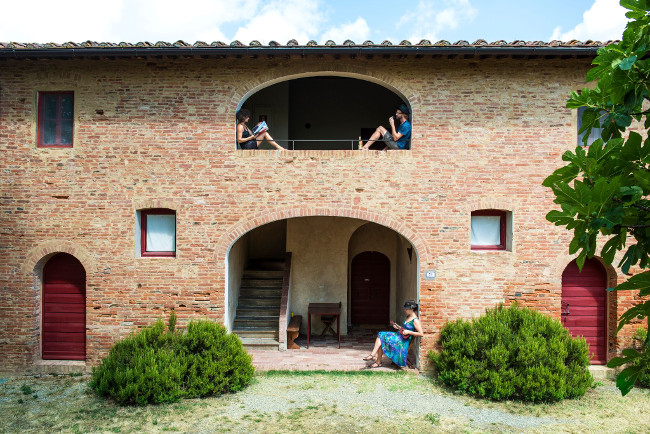
Our last trip highlight was a visit to the picturesque medieval hilltop town of San Gimignano. This ancient destination attracts tourists for good reason, its cobbled streets house churches, piazzas, markets, delicatessens and leather good shops all waiting to be explored. San Gimignano is home to the four-time Gelato World Champion Dondoli, who mingles proudly amongst the long queue of customers. And clear why this little gelataria has one so often, from the creamy coconut and moreish pistachio scoops I tried. Whilst there we were lucky enough to catch The Knights of Santa Fina festival too – this only happens on the third weekend of every June. City dwellers donned medieval costumes and replayed the games that would have been played hundreds of years ago.
Find the cheapest flights to Pisa searching on the award-winning travel site momondo.co.uk. We flew from Stansted – book tickets to the airport from central London with the Stansted Express.












